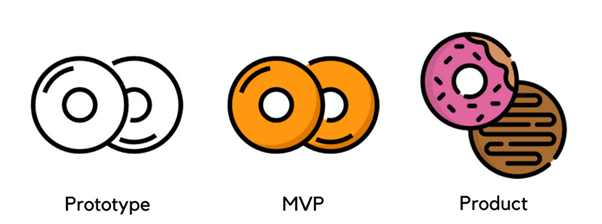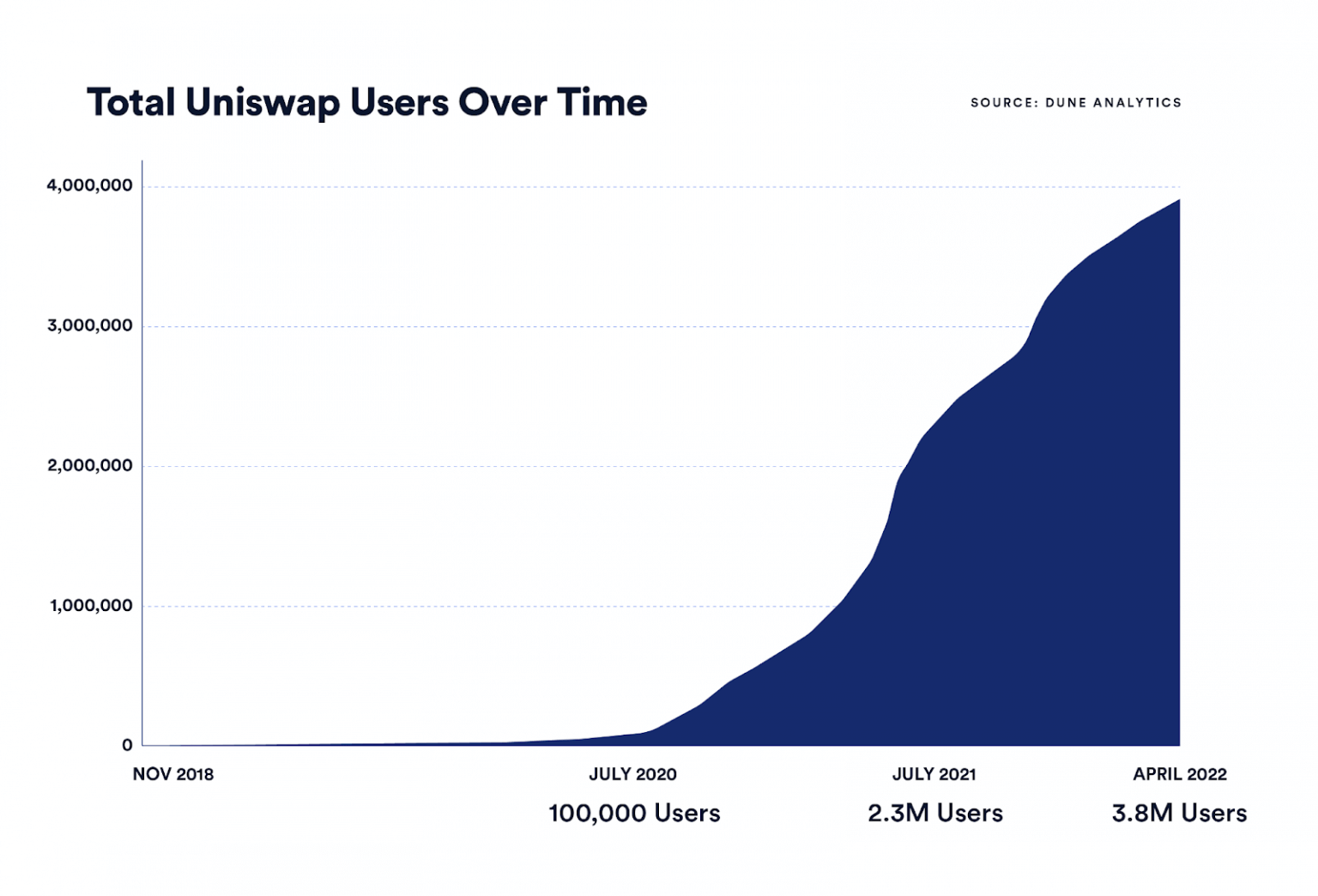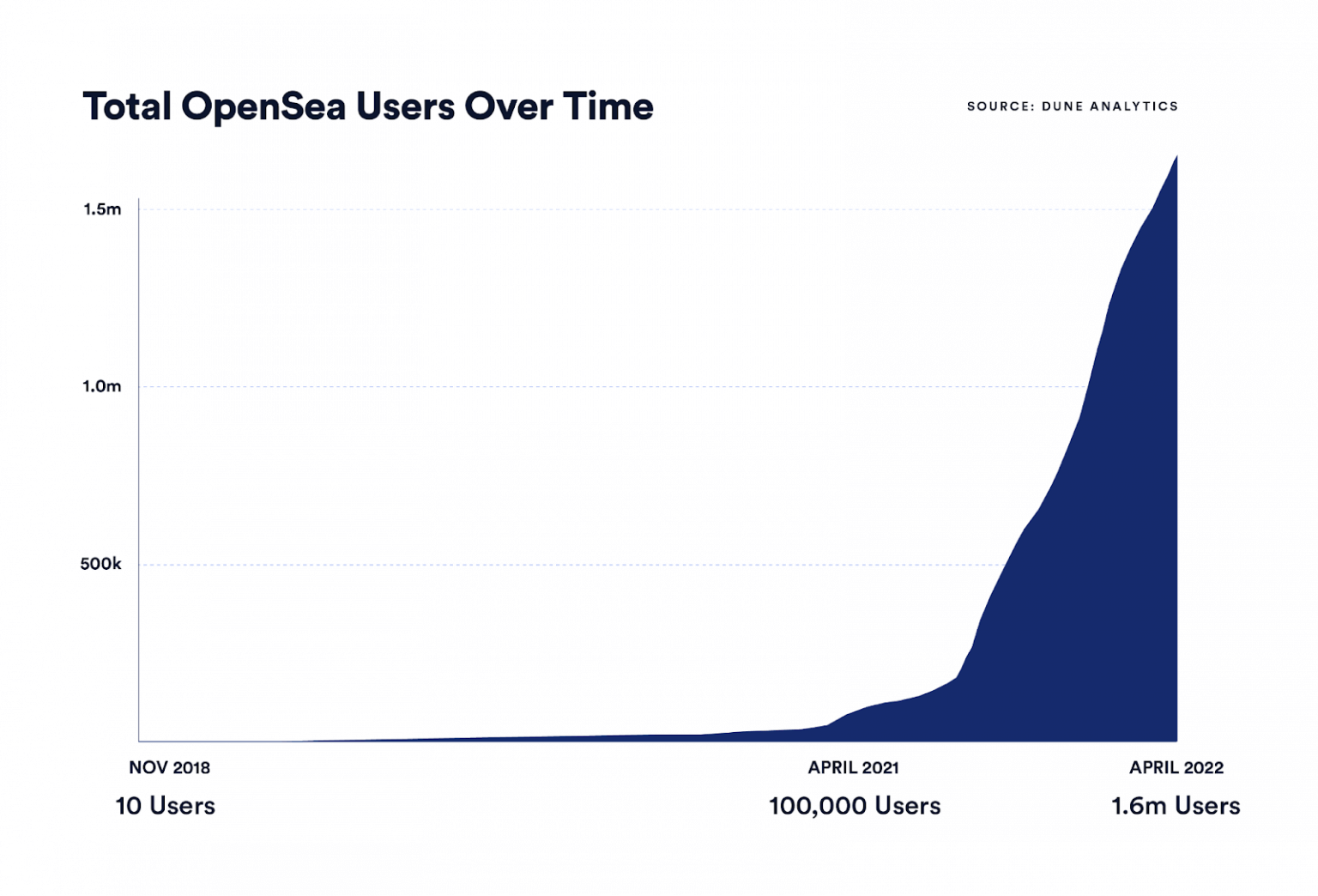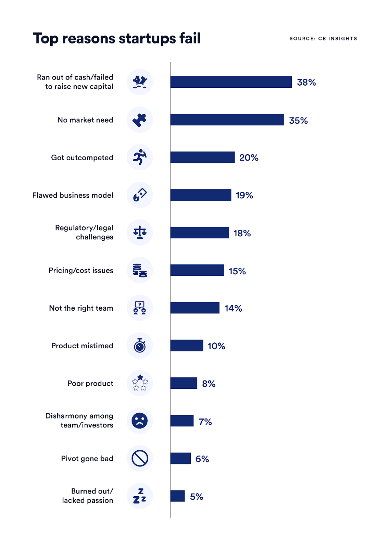Consider these statistics:
- CoinGecko recorded over 3000 dead coins in the last five years;
- Also, reports show that 3 in 4 GameFi projects fail to survive in the web3 space, and
- 10% of general startups die by the end of their first year.
Building a successful Web3 project is not easy, as the stats show. Some of the failed Web3 projects had the potential to be great, with renowned founders, a clear vision, and sufficient funding, but they still failed. Instead of focusing on their mistakes, we discovered that the key to success lies in getting three layers right. By studying successful projects, we find that focusing on these three layers is how to build a successful Web3 project.
The 3 Layers of Every Successful Web3 Project
- Foundation layer
- Outreach layer
- Delivery layer
1. Foundation Layer
You need to take two essential steps to set a strong foundation for your project- building and documenting. These two form the first layer of your project, which involves
- creating platforms for it
- documenting relevant information accordingly.
The level of documentation required will vary depending on the platform. There are two particular platforms that you’ll need to build for a successful web3 project:
● Content platforms like X.
Your content platform is the primary channel for disseminating information about your project and is essential for attracting new users. In other words, your platform is the public face of your project and should be irresistible to visitors. To achieve this, you must create a captivating profile, post engaging content, and include all the necessary links to provide visitors with more information about your project.
● Community Platforms like Discord and Telegram
Building a strong and thriving community is essential for the success of any Web3 project. People want to know what they’re contributing to and how best to participate.
Web3 is all about community. It’s the backbone of everything from the blockchain’s functionality to service delivery. So, if you plan to create something on Web3 and want to engage with your audience, the key is building a thriving community on platforms like Discord and Telegram. These platforms offer excellent opportunities to connect with people and foster trust and loyalty among your users.
● A Database like your Website, docs or Gitbook
A database is like a central hub where you can store all the important information about your project. This way, anyone interested in your work can easily access, understand, and utilize it to their advantage. By maintaining a comprehensive database, you’ll be helping your community to build trust in your project.
2. The Outreach Layer
This layer is crucial for the success of your project. It’s all about spreading the word and getting more people to know about your project through well-planned and intensive marketing campaigns. Various marketing strategies are available, such as influencer marketing, community incentives, social media ads, and so on.
However, choosing the wrong campaign could cost you a lot of time and resources. Thus, you must strategically select the campaign that fits your project perfectly. If you’re looking for ideas on the best marketing strategy for your project, you can consult us by contacting us. We offer writing and marketing strategies for web3 projects.
When designing your outreach/marketing strategy, it’s crucial to consider the expectations you create for your target audience. By doing so, you can successfully appeal to users who genuinely need or could benefit from your product. These individuals are your primary audience and the ones you should strive to attract. They are the most likely to engage with and contribute to your product, making them an essential group to reach.
Do not focus on outreach before ensuring that your foundation layer is firm. This approach is less effective because gaining the trust and confidence of new members becomes much more challenging without a solid foundation.
3. The Delivery Layer
This layer is all about meeting the expectations of your community and users. You need to listen to their needs and tailor your services accordingly. It’s not just about the service’s functionality but also about how you deliver it, how accessible it is, and how easy it is to customize.
Decisions such as product release, chain expansion, token launching, and airdrops are all made in this critical layer. It requires utmost attention, as even a slight mistake could lead to losing trust and confidence in your community.
Moreover, it is important to maintain consistency in this layer, as most users prefer to be part of an innovative ecosystem. Regularly updating your services and offering new solutions is an excellent way to keep your community engaged and thriving.
How do you successfully implement your Web3 project? (Tips And Tricks)
- Define the Problem
- Building a Minimum Viable Product
- Achieving Product-Market Fit
- Build the Right Team
- Choose the Right Platform
- Embrace Community
Define the Problem
When embarking on a Web3 project, it is crucial to begin by clearly defining the problem that the project aims to solve and the solution it offers. This initial step will assist in identifying the target market, establishing a solid problem-solution fit, and determining the project’s value proposition. By carefully defining the problem and solution, you can set your project up for success from the very beginning. The following steps will help you achieve this:
● Define your target market.
Creating a helpful product that can stand the test of time starts with a well-defined target market. It is an initial crucial step for any startup that aims to achieve success. Before launching a project, startups must confirm that it meets the needs of their target market, ensuring that it is valuable and desirable.
● Identify competitors and alternative solutions.
You can assess the various solutions available in the market from your competitor analysis. Also, that you have competitors shows that that particular problem requires addressing.
For instance, Uniswap tackled decentralized exchanges’ liquidity and pricing issues. They achieved this by introducing the x*y=k formula and revenue-generating liquidity pools. As a result, several competitors and alternative solutions, such as Bancor, Curve Finance, PancakeSwap, and Trader Joe, have entered the decentralized exchange market and amassed many users.
With a competitor analysis, you guarantee that your Web3 project provides a unique solution that caters to a specific need. Considering the Web3 space is a competitive market, it is crucial to have a fundamental value proposition that attracts users to your projects instead of alternative solutions. This benefit is more important for open-source DeFi protocols, which can be easily duplicated to offer the same functionality.
Building a Minimum Viable Product
Once you have found a problem-solution fit, it’s time to develop your Minimum Viable Product (MVP). This MVP will be your offering with just enough features to attract early adopters and validate the product. In the Web3 industry, this typically coincides with a beta or testnet launch. Frank Robinson introduced the MVP concept in 2001, allowing startups to validate their ideas while minimizing resource expenditure.
● Build a Product People Want
The MVP philosophy is centred around the idea that a Web3 startup should be able to move quickly and iterate. The motive here is to build a product people want.
By introducing a minimum viable product to early adopters, your team can receive valuable feedback early in the product development. This feedback allows you to make quick iterations and pivots based on user feedback, enabling the product to evolve and improve over time.
● Focus on user experience.
Pay close attention to the outcome of your market research and the feedback from potential users. Use these results to determine the essential features and functionalities that your product should have. Stay focused on solving the core problem and delivering a valuable user experience.
● Test and Iterate
Test the MVP with a select group of users to collect their valuable feedback and pinpoint areas that require improvement. By iterating and implementing changes based on this feedback, you can enhance the user experience and refine the product.
Achieving Product-Market Fit
Product-market fit is a term coined by Marc Andreessen, a renowned investor and entrepreneur. This term describes the ideal scenario where a new product satisfies the market demand. Achieving product-market fit is the ultimate goal for every highly successful web3 project. When it happens, there’s a surge of liquidity, a wave of easily retained users, glowing customer reviews, and much more.
However, one must consider the timing as it can be unpredictable. Good examples are OpenSea and Uniswap, two of the largest Web3 projects. Despite being operational since 2018, their user bases have skyrocketed in the past two years. Although they created an excellent product for their users, they had to wait for the market to catch up.
Build the Right Team
- Identify the roles and skills needed under Development, Marketing, and Business Development.
- Recruit team members with the needed experience and skills. Consider if specific sector knowledge in Web3 and your target sector is necessary.
- Use your networks, do job postings and referrals, and attend networking events to find potential team members.
- Develop a strong culture and team dynamics by creating a shared vision, values, and goals for the team. Foster a collaborative and supportive work environment and hold regular team-building activities with open communication channels.
Choose the Right Platform
Ethereum, BNB Chain, Solana, Polkadot, and more are all available blockchain platforms for your project. Each platform has its strengths and weaknesses. While Ethereum is well-known for its robust smart contract capabilities, alternatives like Solana offer lower fees and faster transactions.
So, evaluating the project’s requirements and preferences is essential before deciding. Factors like ecosystem, transaction speed, scalability, and the consensus mechanism should all be considered.
Additionally, it’s essential to consider the ease of on-ramp/off-ramp processes. With Web3’s composability feature, exploring existing protocols that can be integrated into your project can enhance functionality and potentially reduce development time and costs. Considering all these factors, you can make an informed decision and select the best platform for your needs.
Embrace Community
Building a community is crucial for the success of your Web3 project as it can provide valuable insights into the problem and solution at every stage of the process. Your community can guide you from ideation to launching the product.
Ensure that your project’s community represents your beachhead market. That means a small group of users with similar pain points that your proposed solution can satisfy. Getting that right allows you to test your ideas and receive feedback from dedicated community members. The feedback can then be used to iterate and improve your project. Moreover, effective communication with the community is vital to building a successful Web3 project.
Why Take a Lean Software Development Approach?
Adopting a lean software development approach helps minimize waste and prioritize creating immediate customer value. The idea is to develop quickly, fail fast, and apply learnings to build products and features that customers want.
With the lean methodology, new projects must prove the validity of their ideas before investing significant time or capital into building their product or service. According to CB Insights, the top two reasons startups fail are either a lack of capital or a lack of market need. By adopting a lean approach, you minimize these risks by spending money on the most important things and ensuring a market demand before investing excess time and money.
Frequently Asked Questions (FAQs)
● How do you build a Web3 app without writing smart contracts?
You can build a Web3 app with blockchain-based functionalities without any smart contract development by utilizing existing smart contracts, third-party services, and front-end development.
● Where can I find SDKs for building web3 apps?
Ethereum, IPFS, Truffle, Embark, and EOSIO are popular platforms offering SDKs for building web3 apps. Consider exploring as many platforms and libraries as possible to find the one that best suits your needs.
● Why is Web3 developing so slow?
The reverse is true, as the emergence of Web3 signifies a significant change in how the Internet is constructed and utilized. This shift, coupled with recognising its advantages to individuals, organizations, and society, is fueling its growth.
● Why should one learn Web3?
Learning about Web3 opens up possibilities for building innovative applications and staying up-to-date with the latest developments in the field. This knowledge is valuable for personal and professional growth.
● How do you raise money for a Web3 project?
Initial Coin Offerings (ICO), seed funding, grants, accelerator/incubator programs, DAO funding, and venture capital are ways to raise money for a web3 project.
● What skills do you need to build on Web3?
You need to understand the basics of Blockchain, Smart Contract Development, Solidity, and communication skills.





